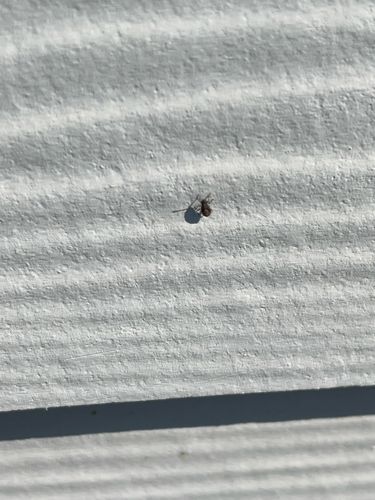Clover Mite
Scientific Name: Bryobia praetiosa
Order & Family: Order: Trombidiformes, Family: Tetranychidae
Size: Approximately 0.75-1 mm (0.03-0.04 inches) in length

Natural Habitat
Clover mites are commonly found outdoors in lawns, gardens, and along the foundations of homes, especially in areas with well-fertilized lawns and dense vegetation. They prefer cool, moist environments but become a nuisance when they migrate indoors during hot or dry conditions.
Diet & Feeding
Clover mites are herbivorous, feeding on clovers, grasses, and other plants. They use their styli (mouthparts) to puncture plant cells and suck out the chlorophyll.
Behavior Patterns
Clover mites are most active in warm, sunny weather. They often aggregate in large numbers on foundations or sunny sides of buildings, especially in spring and fall. They can enter homes through cracks and openings around windows and doors. When crushed, they leave a reddish-brown stain.
Risks & Benefits
Clover mites are generally considered a nuisance pest. They do not bite humans or animals, nor do they carry diseases. However, their presence in large numbers can be annoying, and when crushed, they can stain surfaces such as walls, carpets, and furniture. They do not cause structural damage to homes. In natural environments, they are part of the food chain for other small arthropods, but they are not known for significant ecological benefits or risks.
Identified on: 8/30/2025